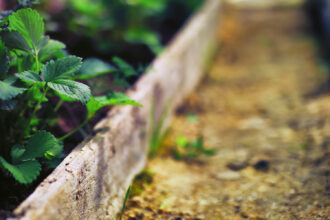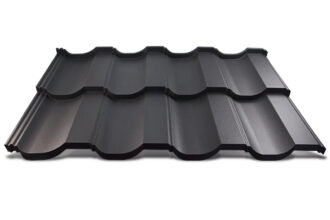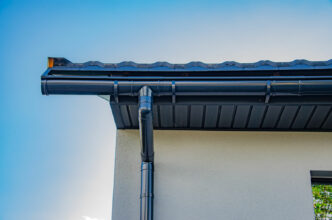Gutter systems are a very important roof element of every building. A properly selected gutter system enables effective water drainage from the roof, and also prevents the formation of stains on the walls. The gutter system, however, in order to meet all the criteria and be reliable, it must be tight and properly fitted with the roof and the building.
What does the gutter system consist of?
The gutter system consists of individual elements that should be well fitted to each other. That will ensure the tightness of the entire system. Gutter systems can be made of various materials and have different cross-section shapes. The standard gutter systems consist of the following elements:
- a gutter
- an external corner
- an internal corner
- a hook for supporting gutters and corners,
- a hunting rifle widened with a gutter connector,
- a drainage pipe
- an elbow
- a downpipe clamp,
- a t-shaped connector
- an access eye
- a clarification plant
- a water drainage
Types of gutter systems by kind of material
The gutter systems can be made of various materials. Each type of material has its own specific properties and therefore can be applied in specific cases. The following gutter systems can be distinguished, according to the material they are made of:
- The copper gutter systems are durable and aesthetic, they are made of a copper alloy that gets patinated under the weather conditions, they are applied in historic buildings, in private single-family houses covered either with copper sheet or ceramic tiles,
- the titanium-zinc gutter systems are durable and effective, and require no additional protection or maintenance, they are factory patinated and rough, which may cause dirt to accumulate inside, however their durability is be over 100 years,
- the gutter systems made of galvanized steel sheet are covered with a protective layer of zinc and an additional protective layer of pural, plastisol or polyester; these are one of the most common types of gutters, they are resistant to corrosion, weather conditions, or mechanical damage, but may be difficult to machining process, have a long service life. They can be used in virtually any building, on almost any roof, and are available in a very wide range of colors,
- the aluminum gutter systems are covered with a protective coating, resistant to weather conditions and corrosion, are troublesome in sheet metal machining, but they are the lightest of all types of gutters, have a smooth surface,
- the plastic gutter systems do not require maintenance, are resistant to sunlight and chemical factors, are light, easy to install and relatively cheap, hey come in various interesting colors and are characterized by high thermal expansion, however, it is possible to apply appropriate joining elements and installation methods .
- the wooden gutter systems are a unique solution that is manufactured on special order; this type of gutters are used, for example, in wooden highlander huts or thatched roofs.
The types of gutter systems by cross-section shape
The gutter systems may also differ in the shape of the gutter cross-section. The most common ones are those with a semicircular cross-section. This shape ensures the greatest resistance to loads of a gutter system. You can also come across systems with a semi-oval, trapezoidal, rectangular or square cross-sections. Gutters with non-typical shapes are primarily decorative.


